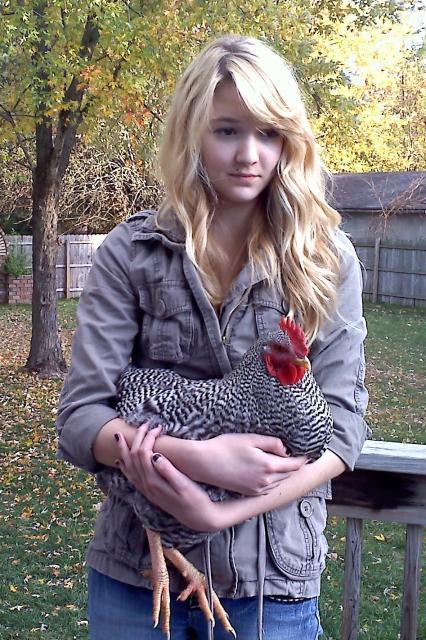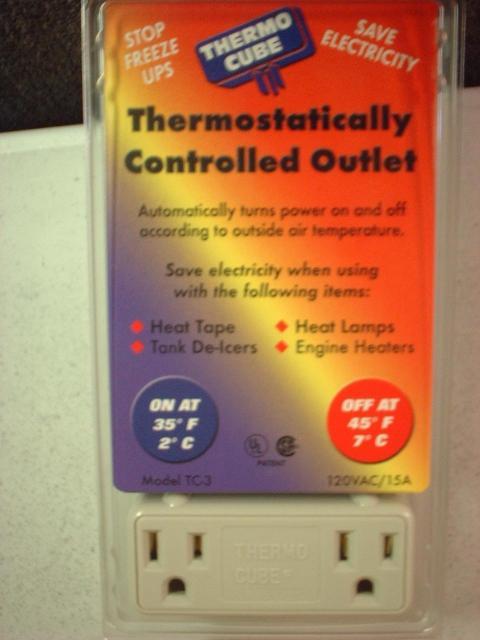A few thoughts on heating the coop:
First, the notion that chickens didn't originate in Michigan (or a similar cold climate) is, I suppose, accurate if we're talking
originally, originally -- as in when they first branched off from jungle fowl -- but many modern breeds of chickens did, in fact, "originate" -- as in were developed as a breed -- in cold climates. Today we have
Rhode Island Reds,
Plymouth Rocks,
Delwares,
Jersey Giants,
New Hampshires, Buckeyes (which come from the Buckeye State, Ohio), Brahmas which are thought to have originally been introduced here via New York State in the early 19th Century so have a long history of cold climate living, Chanteclers which were developed in Quebec, Campines who are thought to come from Belgium, Wyandottes are said to come from Wisconsin and New York and on and on the list goes. Most modern day chickens of the most common breeds, in fact, have decades and decades if not more than a full century of cold-hardy ancestors in their lineage.
This isn't to say you can't heat the environment for these types or chickens or even that any given chicken within this breed is perfectly-suited to the cold. If you should decide to heat your coop regardless of the breed of your particular chickens and their ancestry a few things to consider:
- Condensation. Heat in the coop can actually
increase condensation. Aside from the normal respiratory upset that can be caused by condensation year round, excess moisture in the coop in the cold leads to increased risk of pneumonia and a higher likelihood of frostbite on those chickens with large single combs, especially. The only time I've ever seen frostbite in a chicken was this year. A rooster stood out in the drizzly snow we got in late winter. Cold + Wet = bad. Just cold, or just wet they can usually deal with, but both leads to some nasty side effects.
- Back-up Powder. Do you have a way to ensure that the heat is not suddenly shut-off in the middle of January due to the power grid? Nature's natural cycle of cooling down gives the animals an opportunity to acclimate to the cold weather ahead. While we have big swings in temperature here in Michigan it is nothing compared to the swing in temperature if you start keeping your coop at, say 30 degrees, now and then in the middle of a -20 degree January blizzard the power goes out and the chickens have a sudden drop of 50+ degrees to contend with. If you cannot sustain the heat throughout the winter regardless of the status of the grid, do not start heating at all. It's really not fair to the chickens to risk that. Think back to some of the major ice storms we've seen in history that have resulted in some people being without power for as much as weeks in the middle of winter. It can happen to any of us at any time. The grid is not there to serve you, no matter what your congressman and power company may want you to believe. Unless you have complete control of your power source you cannot guarantee it will be working when you need it most.
- Fire Hazard. Every year we have posts crop on BYC in the winter of people who have burnt their coops up -- and some who have lost chickens in the fires. If you DO decide to heat your coop make sure you double, triple and quadruple check for safety. Never depend on the manufacturer's hanging apparatus for heat lamps. Double secure them with chains and clips that are in good repair and check your set-up over daily to make sure it hasn't somehow come unhooked. Make sure your heat lamp always has the guard over the light bulb. Make sure heat sources are not close to your bedding materials, feed bags, etc.
- Indoor / Outdoor Activity. If you
want your chickens to continue to be active outside during the winter it may not be a good idea to heat the coop as it amplifies the cold outside. Think about when you have been outside for a long time working or walking or playing in the snow and you get used to it after a while. It's not as cold as it felt when you first walked outside. And then, when you walk back inside, you are astonished at how HOT it feels in there ... until your body acclimates to the new temperature at which point it begins to feel normal again. The chickens will got through the same thing, but don't have the higher thinking capabilities to know that if they get out there it will feel okay after a while. They just feel the cold out there and think: "No thanks!" If you plan on trying to motivate them to get out and about for most of the day indoor heat isn't exactly going to help your efforts.
IMO, KrisRose hit the nail on the head when she pointed out the location of your coop relative to the immediate topography. Wind block is the single most important thing, followed closely by adequate nutrition and hydration and then third by comfortable footing. If your coop is letting in strong drafts you're going to need to do something about that. A wall of straw bales can work wonders -- you can even just line up large round bales, rather than having to stack small squares. If your birds aren't thriving you may need to look at your nutrition. In the winter a continuous supply of additional carbohydrates can be a good thing; as well as a good source of fat and protein, of course. Water can either be heated or can be refreshed twice daily to provide plenty of hydration. I'd like to also add a note on electrolytes here. People tend to be very fond of electrolytes, so much so that they're often toted as a silver bullet to anything that may ail livestock of any kind something akin to the way protein is falsely touted as a cure all to feathering, growth and egg laying woes. Electrolyte mixes
can increase liquid intake, but only to the extent that that liquid is available to be ingested and only to the extent the animal is physically and biologically capable of ingesting liquid. Improperly used electrolyte mixes can very much have the exact opposite effect, resulting in a dehydrated animal which, in the winter, is especially dangerous and likely to result in death.
Good luck on your decision!









